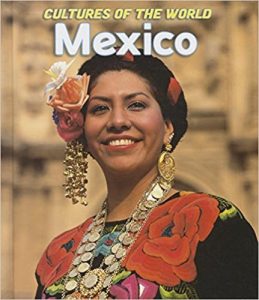 Provides comprehensive information on the geography, history, wildlife, governmental structure, economy, cultural diversity, peoples, religion, and culture of Mexico.
Provides comprehensive information on the geography, history, wildlife, governmental structure, economy, cultural diversity, peoples, religion, and culture of Mexico.
Mexico
Materials from Mexico
The Girl Who Could Silence the Wind
Sonia’s entire village believes she has a gift, but it’s only in leaving home that she finds out who she truly is. A compelling tale from a rich new voice in young adult fiction.Sixteen-year-old Sonia Ocampo was born on the night of the worst storm Tres Montes had ever seen. And when the winds mercifully stopped, an unshakable belief in the girl’s protective powers began. All her life, Sonia has been asked to pray for sick mothers or missing sons, as worried parents and friends press silver milagros in her hands. Sonia knows she has no special powers, but how can she disappoint those who look to her for solace? Still, her conscience is heavy, so when she gets a chance to travel to the city and work in the home of a wealthy woman, she seizes it. At first, Sonia feels freedom in being treated like all the other girls. But when news arrives that her beloved brother has disappeared while looking for work, she learns to her sorrow that she can never truly leave the past or her family behind. With deeply realized characters, a keen sense of place, a hint of magical realism, and a flush of young romance, Meg Medina tells the tale of a strongwilled, warmhearted girl who dares to face life’s harsh truths as she finds her real power.
Neil Flambé and the Aztec Abduction
 Fresh off his success in solving the Marco Polo murders, Neil FlambÉ heads to Mexico City to take part in the Azteca Cocina — a two-week battle of the chefs. But things start to go wrong at the very first battle: Neil’s box of secret ingredients contains a note inside, telling him that Isabella has been kidnapped. He must lose in the final, or else she’ll be killed! To save Isabella, Neil will need Larry’s knowledge of Mexican history and Spanish, Sean Nakamura’s portable forensic lab, and Angel Jicama’s mentorship. He’ll have to delve into Aztec history, symbolism, and even into the real ruins that are buried under the modern city.
Fresh off his success in solving the Marco Polo murders, Neil FlambÉ heads to Mexico City to take part in the Azteca Cocina — a two-week battle of the chefs. But things start to go wrong at the very first battle: Neil’s box of secret ingredients contains a note inside, telling him that Isabella has been kidnapped. He must lose in the final, or else she’ll be killed! To save Isabella, Neil will need Larry’s knowledge of Mexican history and Spanish, Sean Nakamura’s portable forensic lab, and Angel Jicama’s mentorship. He’ll have to delve into Aztec history, symbolism, and even into the real ruins that are buried under the modern city.
Diego Rivera: His World and Ours
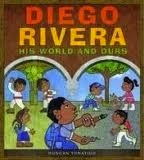
This charming book introduces one of the most popular artists of the twentieth century, Diego Rivera, to young readers. It tells the story of Diego as a young, mischievous boy who demonstrated a clear passion for art and then went on to become one of the most famous painters in the world. Duncan Tonatiuh also prompts readers to think about what Diego would paint today. Just as Diego’s murals depicted great historical events in Mexican culture or celebrated native peoples, if Diego were painting today, what would his artwork depict? How would his paintings reflect today’s culture?
See the review at WOW Review, Volume 4, Issue 3
The Jade Notebook
After down-to-earth Zeeta and her flighty mother, Layla, settle in the idyllic beachside town of Mazunte, Mexico, where Zeeta’s true love, Wendell, has an internship photographing rare sea turtles, Zeeta discovers that paradise has its dark side as she and Wendell dig deeper to unearth her elusive father’s past.
Talking Eagle And The Lady Of Roses
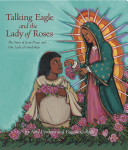
This is the traditional story, told simply and elegantly, of how Juan Diego meets the beautiful Lady on a windswept hilltop in December and carries her message to the disbelieving bishop. The Lady fills Juanz’s cloak with full-blooming roses and impresses her image on its fibers as a sign for the bishop to fulfill her request of building a house of prayers. The story tells of how, over many years, countless hands built the great church dedicated to the Lady of Roses, Nuestra Senora Guadalupe on the hill of Tepeyac. Everyone will enjoy the story of Talking Eagle and the Lady of Roses and the wild and glorious illustrations of award-winning, Taos, New Mexico, artist Amy Cordova. Also included is an informative afterword by Gene Gollogly.
The Food of Mexico
Explore the flavor and culture of this colorful country in The Food of Mexico. What better way to study a country than through its geography, history, regions, customs, and celebrations as they relate to food. Dig right in by trying out one of the delicious recipes inside. Studying world cultures has never been so tasty!
The Cooking of Mexico
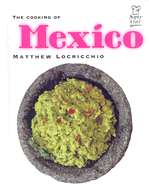
This book introduces the different culinary regions of Mexico and presents many kinds of recipes for traditional Mexico dishes.
Maximilian: The Mystery of the Guardian Angel
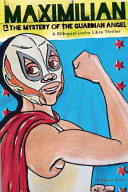
Eleven-year-old Margarito, a big fan of the form of wrestling known as lucha libre, begins to suspect that he has a close connection with his favorite luchador, El Angel de La Guardia, the Guardian Angel.
Señora Regañona
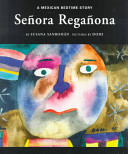
In this story about a universal childhood fear, a frightened girl keeps a light under the covers to scare away the night, whom she calls Señora Regañona (Old Grouch). But one night, she falls asleep in the dark and dreams of flying into the “starry adventure-filled sky” to find Señora Regañona and transform her into a friendly playmate.
